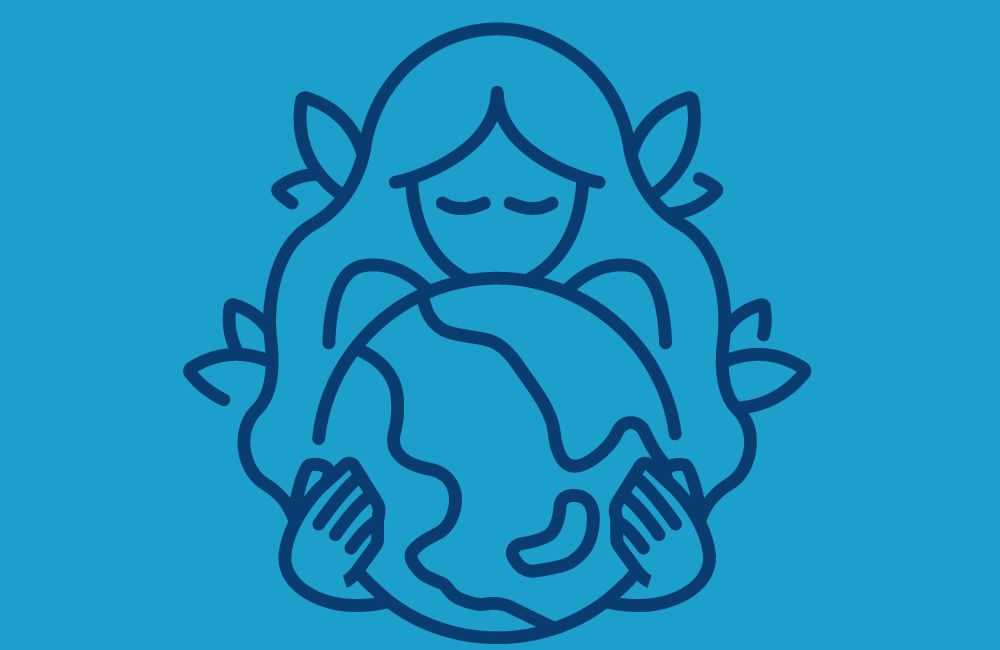There is a rather surprising link between our upcoming talk on William Golding and our new talks series on Conserving the Planet. Have you guessed already? Well, if you didn’t, then you might be fascinated to know the link is Gaia.
The Gaia Hypothesis as put forward by scientist James Lovelock proposed that living organisms interact with their environment to form a self-regulating holistic ecosystem maintaining the conditions in which all living things play their part in creating conditions conducive for life on earth. It might be easy to see why the lectures that are a part of our series on Conserving the Planet can be seen to link to Gaia, but what of our lecture on William Golding?
James Lovelock had been William Golding’s neighbour in Bower Chalke, Wiltshire, and it was Golding who advocated Lovelock name his theory Gaia, after the Greek goddess who personified the earth. A talk on September 3rd with William Golding’s daughter Judy is to be followed by a live Q&A in which you might wish to ask her something of her father’s ecological beliefs and how they impacted upon his famous friend.
And back to our series of talks on Conserving the Earth. Creepy crawlies – like beetles, ladybirds, bees, mosquitos, and the house fly – make up over 95% of the life on planet Earth. More surprising might be that over two-thirds of these invertebrates are nocturnal or semi-nocturnal. Whilst we sleep, they come out to play! But because we don’t often see and interact with most of these species, their needs are poorly understood and overlooked. Many of their jobs are the same as the daytime species, such as pollinating, recycling nutrients, carrying out natural pest control and providing food for other animals. Their wellbeing is our wellbeing – without them human life could not exist in its current form.
The #Gaiahypothesis describes the existence of a fundamental interconnectedness between living organisms and their planetary environment and while controversial, it has driven the development of a more scientifically driven entity, Earth System science, which treats our planet as a single, interconnected system.
Skyglow – the increase in the apparent brightness of the night sky due to human civilisation – has been a matter of concern to the astronomical community for decades but is now being recognized as a threat to the ecology of invertebrates. Whether it be streetlights, city office and downtown lighting, or security floodlighting, the evidence of the impacts of light pollution on species and ecosystems has grown and strengthened in the last decade. Increased Artificial Light at Night can now be directly linked to measurable negative impacts on energy consumption, human health, and wildlife such as bats, birds, insects, reptiles, amphibians, mammals, and plants. It is a major driver of the “insect apocalypse”, with studies suggesting that 40% of insects will become extinct within decades.
Steve Tonkin is the Dark Skies Advisor to both the Cranborne Chase AONB International Dark Sky Reserve and the Federation of Astronomical Societies. In this talk he will introduce you to some of the practical solutions at hand and show that implementation of these ideas is even good for your pocket.
How dark are your skies? Check it out here
See the description of the BRLSI collection of Zoology including Invertebrates here
Friday, Sept 8th, 2023 7:30-9pm | LIVE at 16 Queen Square Bath
Tickets: £3 for Members / £6 for Non-Members at brlsi.org/whats-on or via this link
This is the first in a series of four talks on the Bath Preservation Trust / Herschel Museum of Astronomy theme Conserving the Planet. The other three talks are;
Friday 13 October, Light and Life beyond Photosynthesis
Friday 3 November, A Cluttered & Noisy Sky?
Friday 1 December, Solutions to Space Debris– all at BRLSI.

